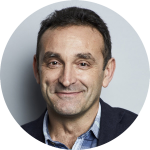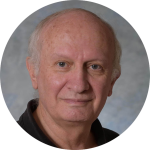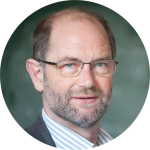Index
Overview
Programme
Travel and speaker info
Hotels and accommodation
Special events
Invited speakers
Young Researchers Cross-Session
Programme committee
Registration
Submission guidelines

Nahid Talebi is a group leader at the Max Planck Institute for Solid State Research in Stuttgart. Her research focuses on investigating near-field-enhanced electron-photon interactions using slow and fast electron microscopes. Her main interests include advancing the time-resolved electron microscopy methodologies and in-depth understanding of the dynamical interactions using time-dependent and self-consistent analytical and numerical techniques. Talebi has received her B.Sc. and M.Sc. from the University of Tehran in 2008 and 2011, and then she moved to the Max Planck Institute for intelligent systems in 2012 as an Alexander von Humboldt research fellow. In 2015 she joined the Max Planck Institute for Solid State Research as a scientist, and in 2018 she received the ERC starting grant NanoBeam. Outcome of her research until now are several high-level publications, patents, and invited review papers.

Javier García de Abajo received his PhD from the University of the Basque Country in 1993 and then visited Berkeley National Lab for three years. He was a Research Professor at the Spanish CSIC and in 2013 moved to ICFO-Institut de Ciencies Fotoniques (Barcelona) as an ICREA Research Professor and Group Leader. He is Fellow of both the American Physical Society and the Optical Society of America. García de Abajo has co-authored 300+ articles cited 25,000+ times with a h index of 78 (March 2019 WoK data), including contributions on different aspects of surface science, nanophotonics, and electron microscope spectroscopies.

Avraham Gover is a faculty member (emeritus) in the Physical Electronics Department of the Faculty of Engineering in Tel Aviv University. He has received his B. Sc. and M. Sc. Degrees in Physics from Tel-Aviv University in Israel in 1968 and 1971 respectively. He received his Ph.D. degree in Applied Physics from CALTECH in California U.S.A. in 1975. He is a Fellow of the IEEE and a Fellow of the American Physical Society. In 2005, he was awarded the international FEL prize “in recognition for his outstanding contributions to Free Electron Laser science and technology”. He is one of the pioneers of the field of Free Electron Lasers (FEL), and one of the leading experts in this field for the last thirty years. Gover has participated in numerous international FEL projects in the U.S. and other countries. In 2005 he served as a member of the “Soft X-Ray Free Electron Laser Committee” of ESFRI (EU), charged of preparing a road map of the long term scientific infrastructure development of the European Union Commission. He has presently scientific collaborative projects on FEL science with UCLA, SLAC and Stanford University. Gover’s expertise is in both the theoretical and experimental fields of lasers and quantum electronics, and his main contribution. He has contributed to the development of numerous innovative theoretical and experimental concepts in the field of free electron radiation sources. These include the identification of the common high gain and collective regime dispersion relation of FEL and a large variety of free electron radiation sources, the theory of Quantum-FEL and other quantum radiation sources and fundamental relations of spontaneous and stimulated emission, Smith-Purcell FEL, Electrostatic schemes and concepts of pre-bunched beam FEL – superradiant and stimulated superradiant FELs and the Tapering Enhanced Stimulated Superradiant Amplifier (TESSA). His comprehensive theoretical model of FEL and e-beam radiation devices is published in the chapter on Lasers/FEL in the Encyclopedia of Modern Optics.

Pieter Kruit is full professor of physics at Delft University of Technology in the Netherlands. He has had a chair in charged particle optics since 1989. He is (co)author of over 200 publications, author of 50 international patents, and supervisor of 35 PhD dissertations. His research is related to the development of electron- and ion-optical instruments for microscopy or nano-lithography. His innovative designs often use MEMS structures. He is presently applying this technology in designs for a Quantum Electron Microscope where the non-demolition principles are investigated for application in low dose microscopy. Most of his work is performed in cooperation with industry. Based on his work he founded, with his graduates, the companies MAPPER Lithography and. DELMIC. Among his organizational responsibilities was the editorship of Ultramicroscopy.

